A benefit tool by many names.
First things first, there is often confusion between what is insurance and what is not. Insurance is when the “risk” of claim—life insurance, disability, pharmacy, health care—is under contract with an insurance provider. Financial benefit tools like Administrative Services Only (ASO), Health Spending Account (HSA), and Cost Plus, are considered self-insurance and referenced under the umbrella term, Private Health Services Plans (PHSP).
According to the Government of Canada any time the risk is not backed by a contract (policy) of insurance, it is considered self-insurance. Self-insurance is where the “risk” of claim is owned by the business entity.
When identifying what kind of benefit plan to put in place, there are several options to consider:
· Traditional Benefits:
fully insured by the insurance carrier.
· Administrative Services Only (ASO):
looks, feels, and acts in the manner of insurance, but it is self-insured with defined benefit options, according to the benefit itself.
· Health Spending Accounts (HSA):
self-insured benefits with defined overall maximum and open benefit options for health and dental services.
· Personal Spending Accounts (PSA):
self-insured taxable benefits with a defined maximum and open benefit options outside of the specifics of Health Canada.
· Hybrid:
combination of specialty designed benefits options able to meet the needs of all employees with significant cost stability and choice of coverage.
Our mandate is to help provide the best Employee Benefit Program for each company we serve. More detailed benefit information on this subject and more is available in our book “Perspective”, specifically for those in the Human Resources space.
Traditional verses Non-traditional Coverage options
|
Traditional Insurance |
|
|
Hybrid |
|
Group Life | AD&D | Dep. Life | Critical Illness | Short- & Long-Term Disability | Stop-loss |EAP | Travel Insurance |
Traditional: “Risk” of claim owned by insured underwriter
Non-traditional (below): “Risk of claim owned by the corporate business. |
Includes both traditional underwritten insurance and self-insured options. |
|
|
Fully Insured Benefits |
ASO |
HSA |
|
|
Pharmacy |
Self-insured to look & acts like traditional insurance, with defined maximums per benefit line. |
Self-insured. Employees can claim on any covered benefit line UP to the defined overall maximum. |
|
|
Health Care |
|||
|
Paramedical |
|||
|
Vision Care |
|||
|
Dental Care |
|||
Canada Revenue Agency (CRA)
In order for a benefit plan to be considered a PHSP (self-insured) ALL of the following conditions must be met:
· All of the expenses covered under the plan are:
o medical and hospital expenses (medical expenses)
o expenses incurred in connection with a medical expense and within a reasonable time period following the medical expense (connected expenses)
o a combination of medical expenses and connected expenses
· All or substantially all of the premiums paid (generally 90% or more) relate to medical expenses that are eligible for the medical expense tax credit (METC)
· The plan is in the nature of insurance and meets the conditions outlined in paragraph 3 of the Interpretation Bulletin IT-339R, Meaning of private health services plan [1988 and subsequent taxation years]
· The plan provides coverage only to the employee, the employee’s spouse or common law partner, or any member of the employee’s household with whom the employee is connected by blood relationship, marriage, or adoption.
When to consider ASO as a benefit plan option
ASO is a fresher option to introduce cost controls and flexibility of coverage for staff, or classification of staff members. Whether looking to define a maximum per benefit line, i.e. Vision care to $500 per person every 24 months or considering a health spending account option of 100% coverage for pharmacy, health, paramedical, vision, and dental services to an overall maximum of $2,500 per employee, as an example, self-insured options take care of the “wants” of everyday needs.
For the decades that PHSP has been a financial tool available for business owners, only about 30 percent of Canadian employers have customized their benefit plans with these options.
Cost Surety
By and large, the main difference between traditional benefits and ASO | HSA is who owns the risk of the claim. When a corporation decides on implementing PHSP program option, they are shifting the risk of the claim from the insurance carrier to themselves, although the insurance provider will typically “administer” the claim processing.
Refund accounting would fall into this category for benefit plan design.
When considering the “cost” of insurance for health and dental whereby an insurer may charge anywhere from 20-35% of premium to process claims, many self-insured models can be added with a 12% overall administration cost charged to claims only. This means that if a $100 claim was made, the company pays $112 of which the employee receives the $100 as a non-taxable benefit (outside the province of Quebec) and the corporation receives the $112 corporate tax deduction. By the same token, if there are no claims, then there is no money paid. Administration is only applicable on the claims whereas due to the nature of insurance, premium and hence the cost of insurance is paid in advance.
Diverse coverage for a diverse workforce
While the essence of benefits hasn’t changed significantly in the last 30-years, the culture, compensation, and workforce certainly have. Both ASO and HSA options allow employers to further customize benefit programs to meet the changing demands of staffing dynamics.
End note on PHSP.
Simply put, a corporation would consider what needs to be an insurable risk over an employee want. This would be applied strategically to some health care, professional paramedical services, vision care, and dental. Consider the items employees look for on a benefit plan are ready to use because they want the services, rather than need the insured coverage. And, if the corporation assumed the “risk” of the claim, the cost to the corporation is minimal overall. A good rule of thumb would be, if the benefit plan already includes a maximum, then it is not really insurance—a “risk” element. For instance, $200 every 24-months for vision care is more affordable than the premium to have that coverage insured.
We’d be pleased to engage in a meaningful conversation. Give us a call.
Note: this was written without the aid of Artificial Intelligence (AI)
Disclaimer: Please note that the information provided, while authoritative, is not guaranteed for accuracy and legality. The site is read by a world-wide audience and employment, taxation, legal vary accordingly. Please seek legal, accounting and human resources counsel from qualified professionals to make certain your legal/accounting/compliance interpretation and decisions are correct for your location. This information is for guidance, ideas, and assistance.





